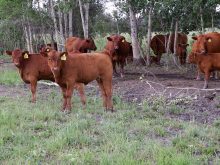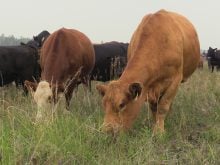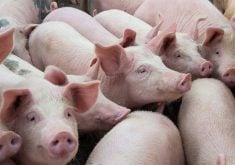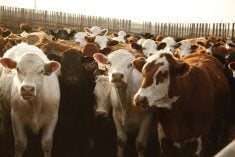REGINA — Historically low U.S. beef inventories are about to change as the industry soon enters its rebuilding phase, according to a Rabobank report.
Lance Zimmerman, senior analyst for animal protein with RaboResearch, said in a report released in late February that he expects heifer retention to further reduce production after five years of herd liquidation. Higher prices across the sector will force producers, processors and end users to adjust strategies to manage those higher costs and limited supply, he added.
Zimmerman suggested that new record-high prices are possible in the next several years, but consumer demand will set the limits.
Read Also
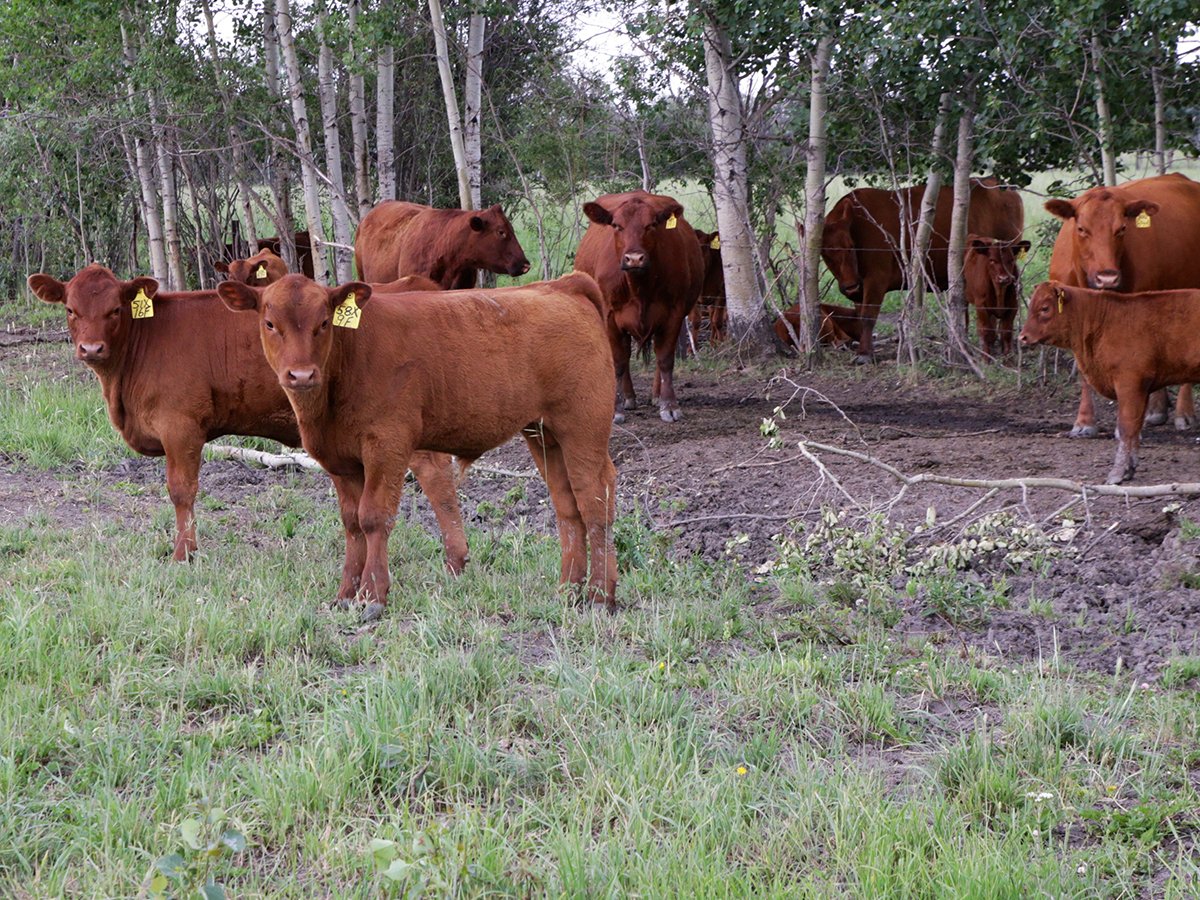
Feeder market continues the climb
For the week ending Aug. 30, Western Canadian feeder cattle markets traded $4-8 per hundredweight higher on average.
“Competing with less expensive pork and poultry on price will be tough, so the industry must demonstrate the added value of beef while continuing to address quality challenges and align with consumer preferences,” his report said.
Rising prices also mean better risk management is required.
U.S. per capita beef supplies in 2025 are forecast at 58.8 pounds, down from an estimated 59.6 lb. last year.
The 2024 supply had gone up about 1.5 lb. per person because of heavier carcass weights, more imports and additional beef-dairy crossbred cattle, the report said, but that will change this year with smaller cattle inventories and heifer retention.
Zimmerman said supplies should be stable through the first half of this year but will tighten by mid-year.
The historically low inventory resulted from the liquidation of 3.8 million beef cows, or about a 12 per cent drop, since the 2019 high. As of Jan. 1, 2025, the feeder cattle and calf supplies outside of feedlots were at levels not seen since 1951.
Improved pasture and feed availability after several drought years should encourage herd rebuilding in both beef and dairy sectors.
Typically, a cull rate of nine per cent or lower signals rebuilding, and the 2024 rate was 10.3 per cent after slaughter dropped by more than 675,000 head. That’s why rebuilding is expected in 2025.
Indications of heifer retention began during the fall 2024 calf run when heifers accounted for 39.9 per cent of feeder cattle and calf sales. That was a drop of 0.7 percentage points year over year and the lowest ration since 2020, the report said.
“Although subtle, the decline suggests that more heifers are being kept on farms for breeding purposes, a trend that is expected to become more common from the latter half of 2025 through 2028,” said the report.
Modelling suggests the heifer retention rate will gradually increase over the next several years and peak near 17.5 per cent.
Steer and heifer slaughter has been consistent since 2017, and RaboResearch forecast that 25.2 million head will be slaughtered this year. That would be the smallest fed slaughter since 2016.
Despite retention, Zimmerman said U.S. cattle inventories will trend lower through 2027, and rebuilding will reduce slaughter numbers. Annual U.S. per capita beef supply is expected to decline to 54 lb. by 2027.
Similar to Canada, consumer demand rose despite concerns about rising inflation and retail prices.
The report also said rising retail prices influence price potential at wholesale and cattle markets. RaboResearch said more than four cents of every 10-cent increase in retail prices is returned to American farmers and ranchers.
“As this cycle peaks, we can expect a record high in the producers’ share,” it said.
The report predicts retail prices will average US$9.25 per lb. by 2027, which supports 500 lb. steer prices of $415 per hundredweight, 800 lb. steers at $310 per cwt. and fed steers at $225 per cwt.
Meanwhile, Zimmerman said risk management is critical for the feedlot sector, in which cattle are the main operating cost.
Higher fed cattle prices could boost short-term margins, but feedlots have to maintain inventory and maximize capacity. That leads to higher feeder cattle and calf prices and forces feedlots to near breakeven.
He noted the working capital required to finish steers in 2024 was about $2,800 per head, or 67 per cent higher than 2019 and double what it cost 15 years ago.
Feedlots operate on thin margins as it is and are risking more cash than ever, he said.
Other industry segments face similar challenges, and the research suggests working capital needs will increase another 25 per cent into the cycle highs at the end of the decade.
RaboResearch suggested all participants diversify their operations to minimize supply challenges.
Contact karen.briere@producer.com





